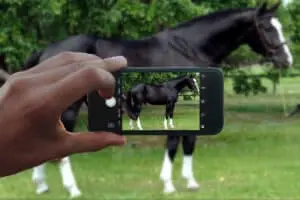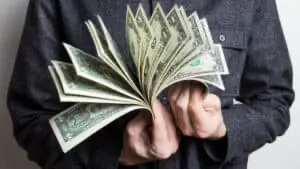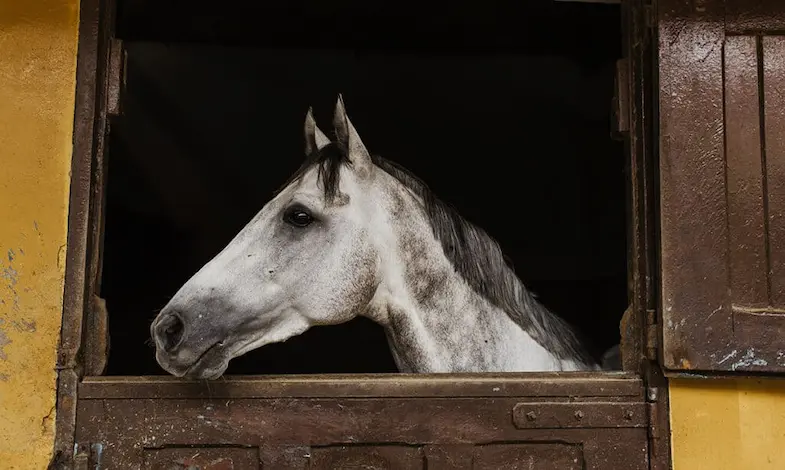With the abundance of websites dedicated to selling anything and everything there’s never been an easier time to buy a horse which is great if you’re buying but what about if you’re selling instead? How do you make your advert stand out from the myriad of other alerts? And how do you make sure your horse is going to go to a good home?
Regardless of whether your selling your horse online, in a print magazine, in your local tack shop, or just via word of mouth it can be difficult to know where to start. Creating the advert is only half of the job and there are things that you can do to help ensure the sale. As somebody who’s sold (and bought) a huge number of horses I thought it might be helpful to pass on some of the things, I’ve learned.
1) Make sure your horse is looking his best.
You wouldn’t consider selling a car without washing it or a house without tidying the clutter away so why would you consider selling your horse without making sure he’s looking his best. You don’t need to spend a long time (or a lot of money) getting your horse ‘showroom’ ready, just make sure his coat is nice and glossy, his mane and tail are neat and if necessary he has new shoes. If he’s been off of work for a while then you might want to think about getting him back into shape too.
2) Sort out your horse’s paperwork
While you’re not going to need it immediately now is as good a time as any to find and organize all of your horse’s paperwork. Not all buyers will want to see this straight away but it’s good to make sure you’ve got everything in one place. Don’t forget to include any registration papers, show results, veterinary records as well as the results of any tests that have been carried out, such as a Coggins test.
I recently put together an extensive horse record kit that you can download for FREE. As well as every record you’ll ever need for your horse it also has pages for notes so that you can keep a record of everything.
3) Take great photos of your horse
As they say, a picture paints a thousand words so it’s important to take your time getting the right photos for your advert, especially when you consider that, online at least, you only get a fraction of a second to get the attention of a potential new owner.
In an ideal world, we’d all hire a professional equine photographer to take the pictures for us but in the real world, this isn’t an option for most of us. Don’t worry though if you follow the tips below you’ll get pictures every time, even when you’re using your phone camera!
- Don’t stand so close – Phone cameras have a tendency to distort pictures but if you stand around 20 feet (6 meters) from your horse then you can avoid this.
- Use landscape mode – You might think that your horse looks best from the front but potential owners will want to see what your horse looks like overall. Landscape mode will allow you to do this.
- Make sure the camera is straight – I know this might seem like an obvious one but it’s important to make sure the camera is parallel with your horse and that you’re not looking up or down on him, or from one side.
- Use natural light – Natural light is always far better than indoor light so, if you can, photograph your horse outside with the sun behind you. This will ensure that you’ve got plenty of light illuminating your horse. Photographing him in the morning or evening will give you the best light.
4) A great video will show your horse’s potential
If you’re selling your horse online (and the advert allows it) then a video is essential because it gives you a chance to really show off your horse’s gaits as well as how well trained he is. You can also use this opportunity to demonstrate anything he’s particularly good at, for example, if you’re selling a top class show jumper then you can show his jumping prowess.
It’s important to keep it short, you don’t want to risk losing a potential new owner’s attention. Anything between two and three minutes is perfect but you can go to a maximum of five minutes if you’re selling a competition horse because you’ll need to substantiate his ability.
5) Keep the description short and to the point
You don’t need to eulogize about everything you and your horse have done, nor do you need to mention every event you’ve been placed in. You’ve already got a potential buyer’s interest so now’s the time to let them know what they can’t tell from a photograph. They’ll want to know what your horse’s personality is like, how well trained he is, what his competition or show record is like as well as his potential. Don’t forget to include the essentials such as age and height as well as, if necessary, his pedigree.
6) Be honest about your horse (and don’t hide things either)
You don’t need to list every vice that your horse has (or has had) but at the same time, you shouldn’t try to hide any potential issues. In many states (and in many countries) you, as the seller, have a legal responsibility to mention anything important about your horse’s health, physical condition, or behavior. Your veterinarian will be able to help with what you should include but as a general rule, it’s better to disclose something rather than leave it out.
Being honest will also help the buyer understand the horse that they may be buying beforehand, this will make the whole process much smoother for both of you because there’ll be no hidden surprises that could derail the whole sale.
7) How to set a fair price for your horse
Deciding on a price is far more important than you might realize, to some extent, it could make or break it. If you’re asking too much then you risk losing potential buyers who may be put off by such a high price. If, on the other hand, the price is too low then some buyers will think that there’s something wrong with the horse and automatically discount it.
When it comes to setting the price it’s not quite as simple as just looking at what other people are selling horses for and using that as a guide. There’s a lot of different factors that need to be taken into account which is why it’s often a good idea to speak to trainers (and or breed registries if your horse is purebred) to get a feel for the sort of price you should be asking.
If, after speaking to trainers, you still don’t know then you can use a horse broker who will, for a fee, be able to set the price for you. Some trainers will also offer an evaluation service that can help you decide on the fee.
8) Research the market
Once you’ve got your pictures and video and have written a description and settled on a price it’s time to actually place your advert, but where should you place it? There are plenty of generic websites that will sell all sorts of horses but if you’re selling a specialist horse (whether it’s a particular breed or a barrel racer) then it pays to spend a little bit of time finding the best places to advertise. If you’re selling a registered horse then many breed associations will have their own listings and the same goes for horse types too.
You’re not restricted to how many sites you advertise your horse on but if you’ve got too many adverts running at the same time it can be difficult to keep up with all of the inquiries.
9) Make use of social media
Now that you’ve placed your advert you need to tell people about it! Of course, the website will already have a lot of traffic of its own but why rely on just that. Get onto social media and start telling people about it. There’s a huge number of Facebook groups dedicated to selling all types of horses so why not make the most of those. If you did make a video then why not post the video on YouTube too, after all, around 5 billion videos are watched on YouTube every single day!
10) Make time to answer any questions from potential buyers
It might seem like a pain but it’s good practice to respond to every inquiry because you don’t know which ones could lead to a sale. Everybody will have their own requirements and expectations on a horse and answering their questions can be the difference between selling and not selling your horse.
11) Get a signed release
Most people don’t consider insurance when they’re selling a horse and automatically presume that if somebody is hurt their insurance will cover it but most of the time this isn’t the case. While there are a lot of special policies (or ‘add ons’) out there for selling horses a large number of owners will have their horse insured under their homeowner’s policy, which will generally have an exemption for ‘commercial’ activity. This means that your policy won’t cover any accidents involving a new buyer or anybody else with them which is why a signed release is so important.
Sometimes referred to as ‘release of liability’ this means that the potential buyer has acknowledged that there is a risk involved and agrees to not hold the seller responsible. In 99.9999 cases out of 100, this won’t be needed but if you are the 00.0001 cases then you’ll be glad that you have a signed release.
12) Making sure your horse is going to a good home
We all want our horses to go to good homes, but there are sadly way too many horror stories of horses unwittingly being sold to traders or worse. The good news though is that there are a number of things you can do to reduce the risk of this happening.
Not being honest in your initial advert can result in a horse not staying with the same owner for long, if for example, the buyer thinks they’re buying a great jumper but in reality, the horse has never seen a jump.
If the buyer has owned horses before (or is a current owner) then ask them for the details of their veterinarian, you can then speak to them for a reference. Likewise, if the buyer is planning on keeping the horse at a boarding yard they already have a relationship with speak to the manager and ask them for a reference. Any decent buyer wouldn’t mind you doing this at all.
Remember that Google is your friend so use it to search your buyer. It might sound creepy doing this but you’d be amazed at what you can learn from a quick google search of their name.
13) All agreements should be in writing
Once you and the buyer have agreed on the sale it’s important to get everything in writing. This should include everything from the agreed price to how the horse will be transported to the buyer’s yard. While you don’t have to have a formal contract with the buyer, having one would help to protect both of you if anything should go wrong.
Conclusion
There’s no magic formula to selling a horse and no set time frame that they should be sold within. Being honest and helpful are the two most important things to keep in mind, that will help you to ensure you get the right buyer for your horse.
Further reading
- What you need to know before buying a horse
- When should you retire a horse?
- Improve your horse’s confidence
- Surprising things you should feed your horse
- Life hacks for horse owners
- Where should I keep my horse at night?
- Keeping a horse alone
- Do horses need supplements?
- Strengthening exercises for horses
- What’s the best bedding for my horse?
I hope you found this article helpful. If you did I’d be grateful if you could share it please as it would really help me.
Recommended products
Over the years I have tried hundreds of different horsey products, from various blankets and halters to different treats. Some I’ve loved, others I’ve hated but I thought I’d share with you my top all-time favorite products, the ones I never leave the yard without. I’ve included links to the products (which are in no particular order) that I really think are great.
- Horse Knots by Reference Ready – If you’re like me and enjoy pocket reference guides then you’ll love this knot tying guide. These handy cards can easily fit in your pocket or attach to the saddle for quick reference. They’re waterproof, durable and are color coded to make them easy to follow.
- Mane ’n Tail Detangler – Even if you never show your horse you’ll need to detangle his tail from time to time (and possibly his mane too) which is always a challenging chore! I’ve found that if I run a little bit of detangler through my horse’s tails every few days it stops them from getting matted up and makes combing them easy, even if they’re coated in mud. I don’t know if I should admit to this or not but it also works wonders on my hair.
- TAKEKIT Pro clippers – Over the years I’ve tried a lot of different clippers and while some were obviously better than others I found these to be by far the best. They are heavier than a lot of other clippers but for me, that’s a good thing, it makes them feel more sturdy and hardwearing. On top of that they have a range of speeds so are just as good for clipping your horse’s back as they are his face. I also like the fact that they come in a handy carry case but that’s not for everybody. The company that makes them is super good and incredibly helpful too, a real bonus these days. The only thing I wasn’t keen on was the fact that it doesn’t come with any oil, but that’s not a major problem as it’s not difficult to buy lubricant.
- Shire’s ball feeder – There are so many boredom buster toys out there but I like to use these every day, regardless of whether or not my horses are bored. I find that it helps to encourage my horses to problem solve by rewarding them with treats (or pieces of fruit) but it also mimics their natural grazing behavior which helps to keep them calm and de-stressed.
- Horse safe mirror – This is a strange one that many people are surprised about but I like to put horse safe mirrors in the trailers as well as in the quarantine stalls. It helps to prevent the feeling of isolation by giving the impression of other horses being around. Being herd animals horses can get extremely stressed when they feel that they’re on their own but with these stick-on mirrors, they believe that at least one other horse is with them.
- Rectal thermometer – I know this isn’t glamourous at all but it’s vital for your horse’s well-being to be able to check their temperature and a rectal thermometer is the easiest way of doing this which is why I’ve added it to the list.
Shopping lists
I’ve also put together a few shopping lists of essential items that I’ve found helpful over the years. I’ve broken the lists down into different categories rather than put everything in one massive list 😉





